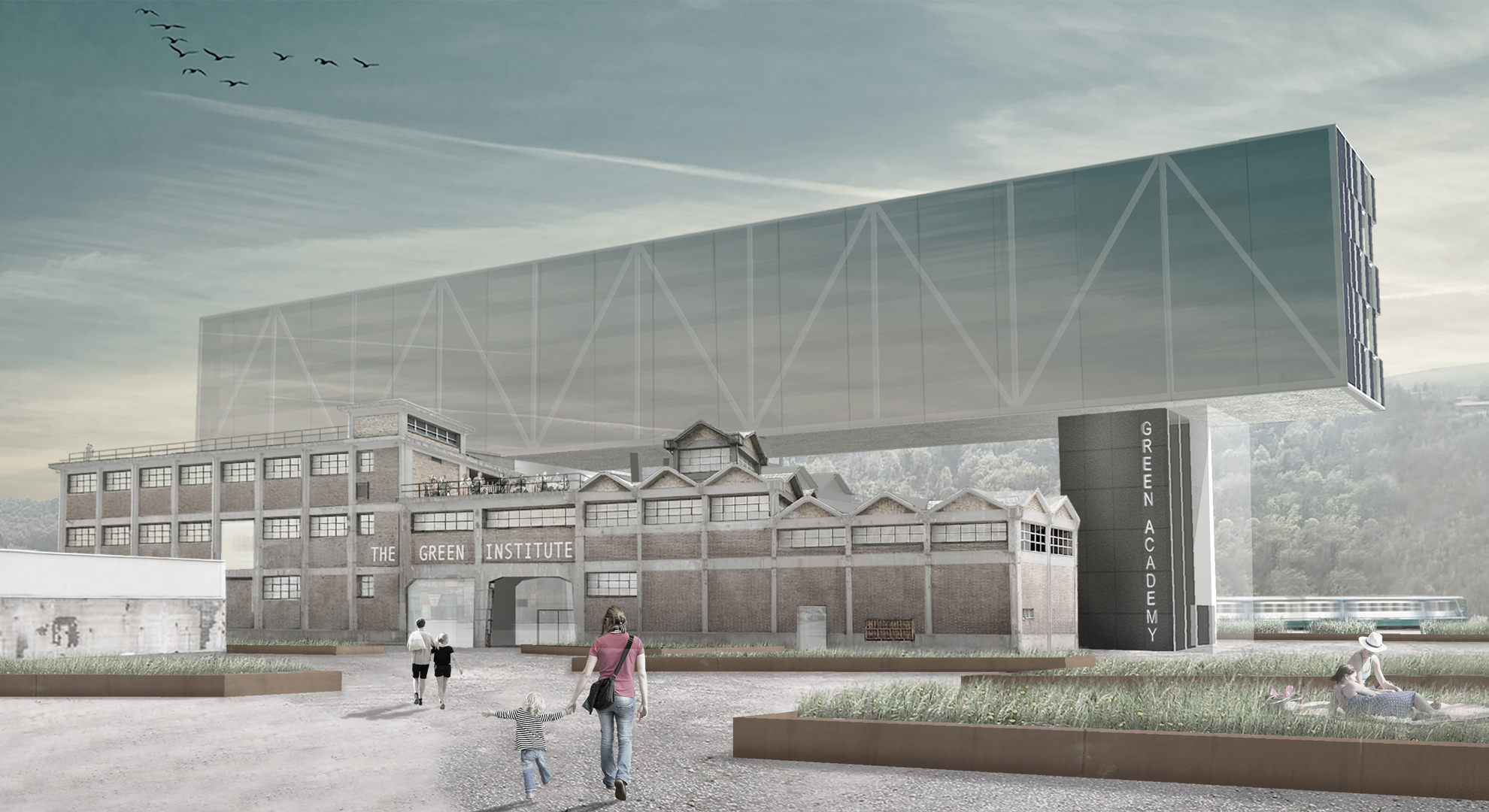GREEN INSTITUTE & ACADEMY
- Competition
- YAC
- Period
- 2016
- Location
- Bologne, Italy
- Team
- VLAA Architects
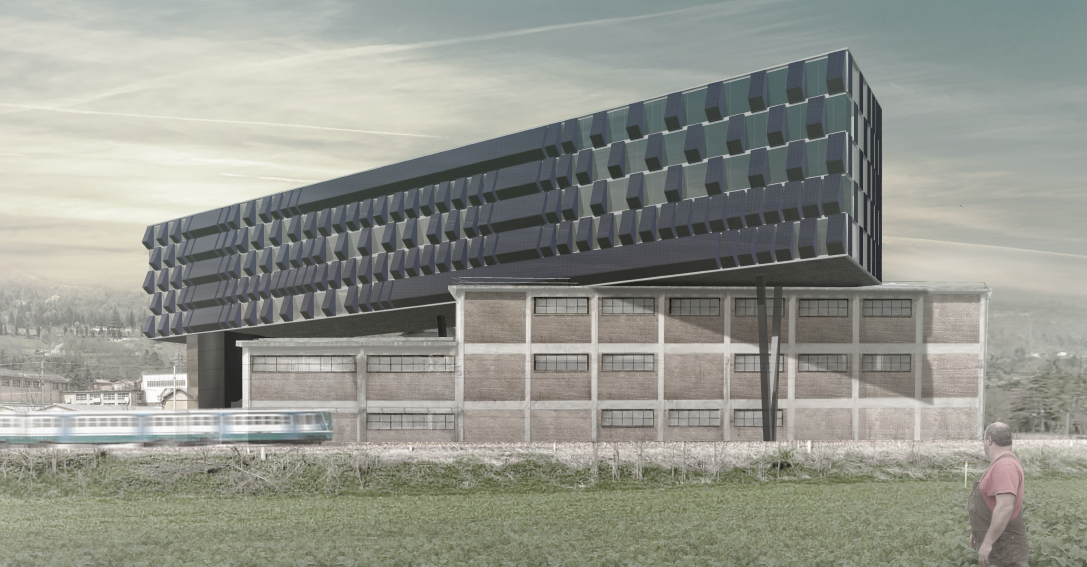
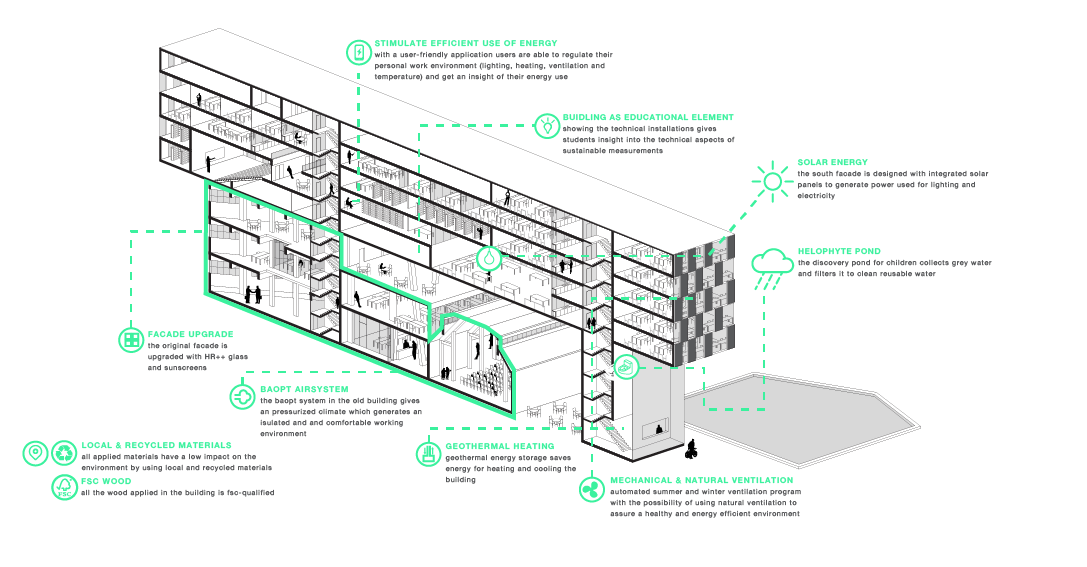
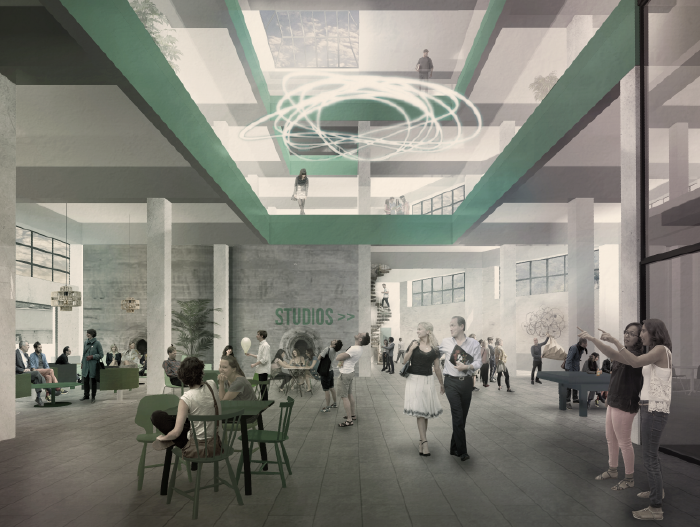
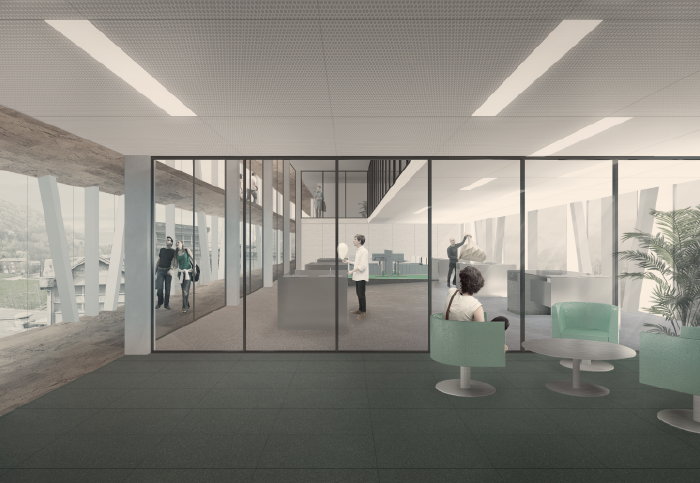
The former paper factory of Marzabotto houses the green institute & academy by DISMECO. The institute contains an academy with high-level training facilities, a green business incubater and an interactive museum, all of them educating a broad public in sustainable science. BUILDING as a LEARNING EXAMPLE As an institute for green and sustainable science, the building itself should embrace the mission. Therefore we strive to realize an energy-efficient building with a minimal impact on the environment. A sustainable building also constitutes a building with a healthy and pleasant environment for those working in it, and those visiting the building. As an educational concept the building technologies used to achieve those goals will all be visible and locally explained to the users. In this way the impact of new technologies is clearly shown and will be an inspiration to the students and other visitors. RENOVATION vs. BUILDING NEW Sustainable design in renovation or in new buildings asks for a completely different approach. To be able to illustrate the wide range of possibilities within sustainable design we created a composition of two different volumes that act as a playground for sustainable design. The majestic paper factory showcases the measures one could take in reuse, bringing an beautiful old building up to standards. The newly added volume of the academy gives us the possibility to go wild in showing the technologies that one could use starting from scratch. The goal is to make this volume completely energy passive. ENERGY POSITIVE Creating a passive building has different consequences for its design. The energy use of the building is reduced with different inverventions, f.e. by a facade with a thermal resistance of 10 m²K/W or an encloused south facade to reduce radiation heat entering the building. Users are also stimulated to reduce their energy consumption by a user-friendly application created to save energy. Beside reducing energy-loss, the building also generates energy by the solar panels intergrated in the south facade. For further information, download our booklet.
